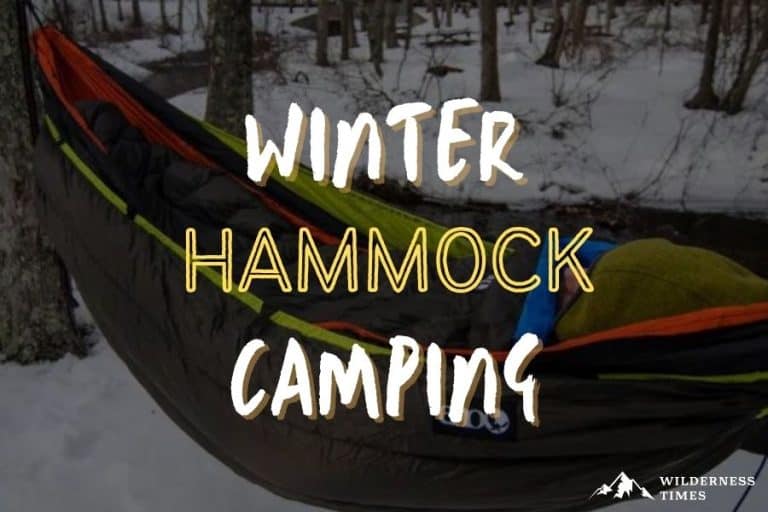I’ll let you in on a little secret:
Winter hammock camping isn’t that difficult.
Obviously, it requires a certain level of preparation. But with the right knowledge and adequate gear, the sky’s the limit.
Without further ado, here are some tips and tricks for winter hammock camping that will prepare you for your next trip.
Let’s get started!
Why Choose A Hammock For Winter Camping?
Let’s get one thing out of the way – hammocks are great.
They’re lightweight and compact. And considering all the other bulky winter gear you’ll be carrying, the last thing you need is a heavy tent, right?
But the thing I like the most about hammocks is how easy they are to set up.
When setting up a tent, you need to find the perfect pitching spot, and with all the mud and rocks and whatnot, that can be difficult. With hammocks, you only need two trees to set it up.
During winter, the last thing I want is to spend precious daytime searching for the perfect spot. Not to mention spending even more time pitching it.
With a camping hammock, such problems are non-existent. Both setting it up and taking it down are a breeze.
Another reason why hammocks are great for winter camping is that they’re above the ground. The soil is cold, and if there’s snow, it’s wet, too. Most times, a sleeping pad is not enough to keep you warm.
On the other hand, with your body off the ground, snow becomes less of a problem.
7 Winter Hammock Camping Tips
Hey, where are you going with that hammock?
Put your stuff down!
There are some things about hammock camping in the winter you need to know before you hit the road.
Keep The Wind In Mind
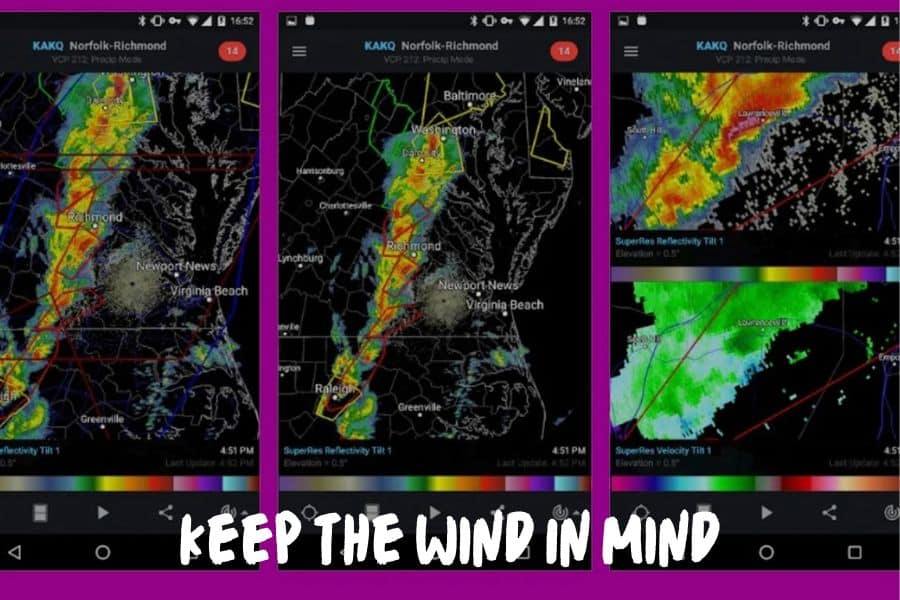
Hammocks are great for chilling and enjoying the cool breeze. But during winter, that’s not a likely scenario.
Winds are strong during this time of the year, as a result of temperature differences between air masses.
Here’s what that means:
Warm air is less dense than cold air, which means it rises higher in the atmosphere. The greater their temperature difference is, the greater the air pressure difference is. This, in turn, causes higher wind speed.
So no, you won’t be enjoying a light breeze during winter. In fact, it’s more likely you’ll swing like a baby in a cradle. If you hang your hammock out in the open, that is.
It might not be blowing at the time you’re setting it up, but during winter, you can expect it to be windy. And since the air is so cold, the last thing you want is to be directly exposed. What a great way to get pneumonia.
So, look for natural windbreaks around you. Since you opted for hammock camping, I’m pretty sure your location of choice isn’t a valley or a plain. Therefore, there’s got to be some trees and bushes around that can give you some wind protection.
Watch Out For Tree Branches
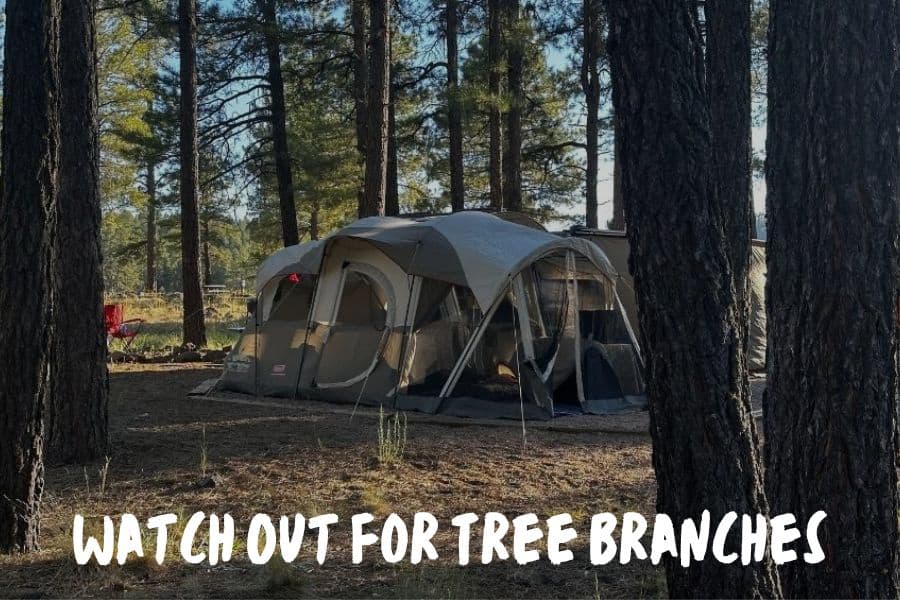
When searching for the perfect spot to set up your hammock, pay attention to the trees around you.
Both weak and low-hanging branches can be potentially dangerous.
Not only can the wind be strong, but if snow falls during the night, it might weigh them down too much. And if they break, they might fall directly onto you.
Use A Hot Water Bottle

During winter, campfires are essential. You need them to make food, but what’s more, you need them to keep you warm, especially when the sun goes down. And as we all know, during winter, daylight lasts only a split second.
If you keep your campfire lit until right before you go to bed, use that time to boil some water for your hot water bottle. This thing can keep you warm for hours during even the coldest winter nights.
Ideally, you want to place it between your inner thighs, where your femoral arteries are. That way, the heat will transfer through your body the quickest.
If the bottle is too hot, put it in a sock or wrap it in a towel before putting it close to your body.
Eat Hot Food

It’s not enough to dress up in warm clothes and wrap yourself with a blanket or a sleeping bag. Your body needs to be warm from the inside, too.
And the best way to achieve that is with food.
As you might know, your body’s metabolism turns what you eat into energy. And according to scientists, our bodies are able to produce between 100 and 120 watts of energy at any given moment – that’s more than your cell phone uses.
So what should you eat?
Soups, stews, instant oatmeals… Basically, whatever you can. These are just some meals that are easy to make on a campfire. If you have all the necessary ingredients for a burger, then be my guest!
There’s no better way to warm your body and heart than with comfort food.
Use A Travel Pillow
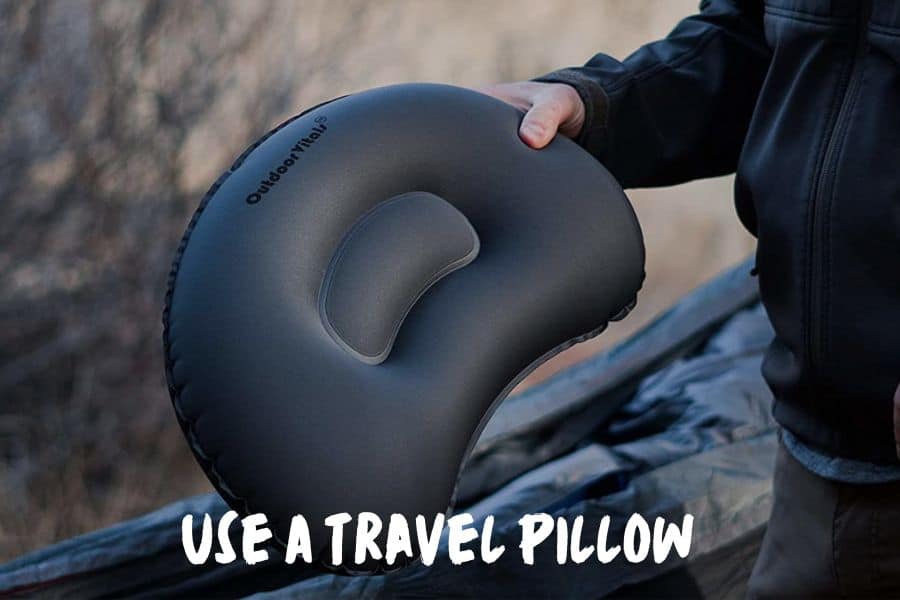
Your body is well covered by either a sleeping bag or a quilt – whichever you opt for – but what about your head?
Sure, you have a hat on, but don’t forget about your neck. Especially if you have short hair. Just the thought of a bare neck during winter gives me chills.
A simple travel pillow can do wonders here. Not only does it give you decent support, but it also keeps your neck and shoulders warm.
You can also opt for a lightweight backpacking pillow or a stuff sack if you want too.
Dress In Layers
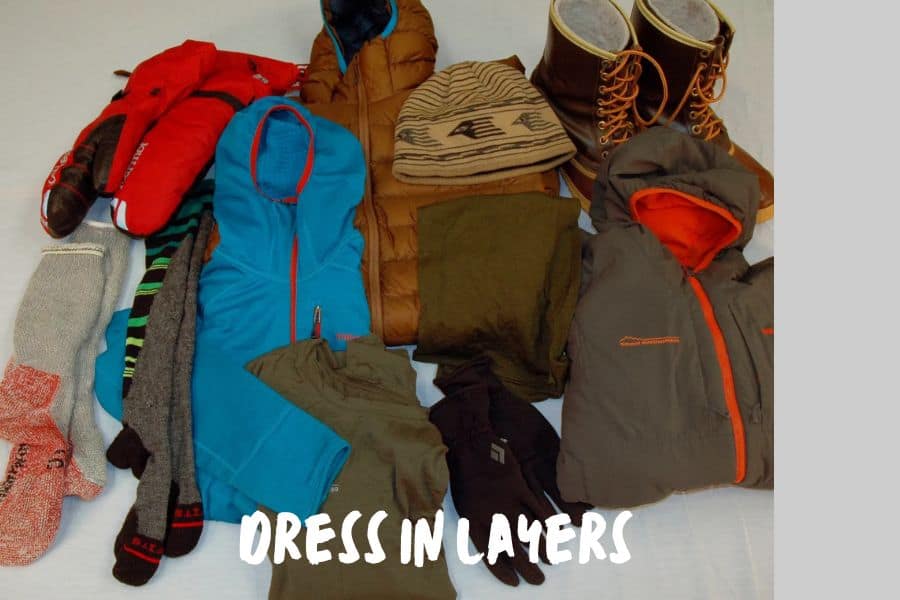
I’ll go into more detail later on about what to wear when sleeping in a hammock during winter, but the main thing you should do is dress in layers. That way, you can always take something off if it becomes too hot.
Too hot? Yeah right…
No really, your body temperature drops a bit while you sleep, releasing all that energy your metabolism created. Suddenly, all those layers that are trapping the heat are doing their job just a tad too well.
Get An Emergency Blanket
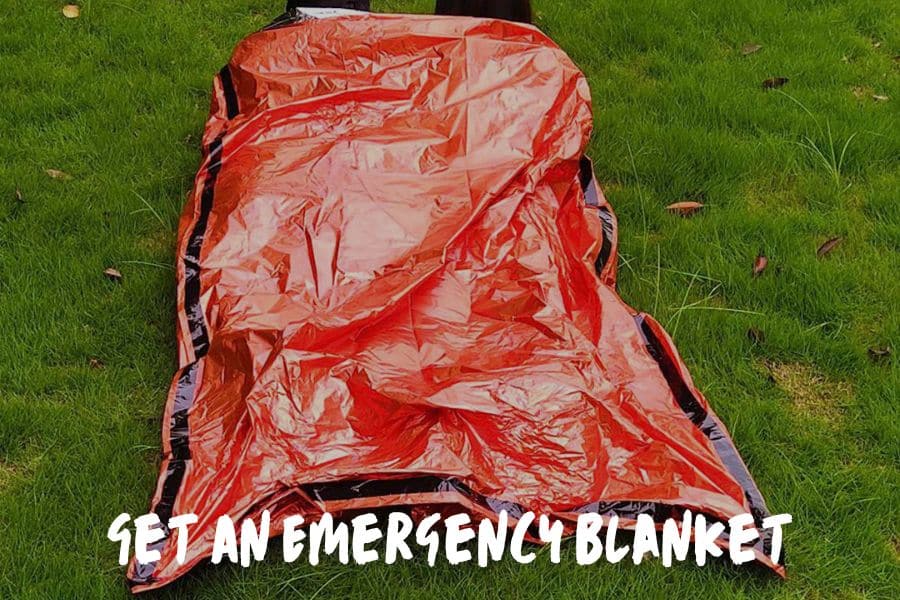
When camping during winter, an emergency blanket should be an essential item on your gear list. It’s affordable and lightweight, but above all, it can be a lifesaver.
This sheet-like material doesn’t look like much, but it works wonderfully at reflecting your body heat back to you.
It’s invented by NASA, and it’s commonly used by rescuers to protect people from hypothermia.
Need I say more?
If you start feeling cold during the night, you can put it underneath you or wrap yourself in it, and soon you’ll forget it was even chilly in the first place.
Essential Winter Hammock Camping Gear
Generally, hammock camping means packing light – just the bare minimum.
But in winter, we need more stuff than we would during summer, right?
So, let’s see what winter essentials are.
Hammock
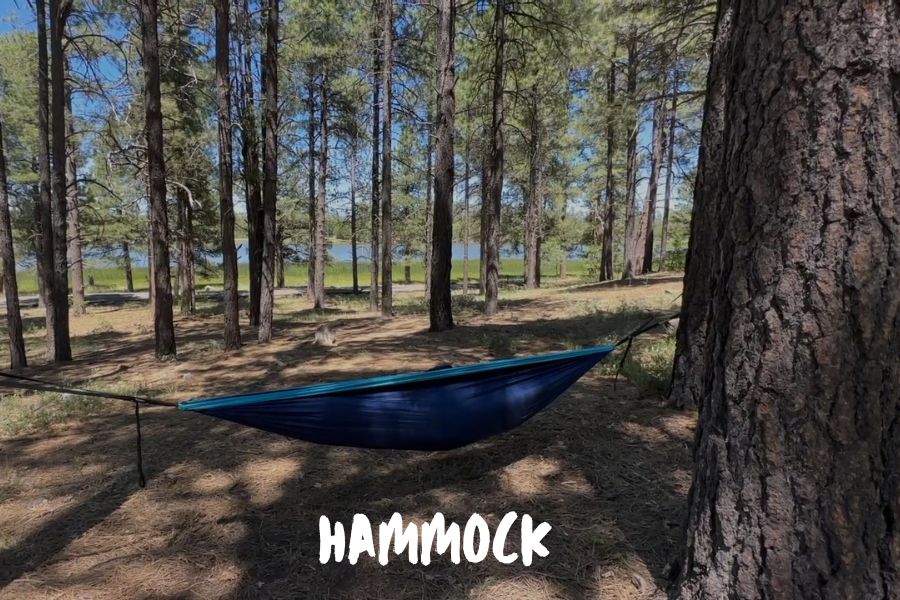
When picking the perfect hammock, look for double-layer hammocks, or those with a separate layer where you can fit a sleeping pad in.
But keep in mind that there aren’t many hammocks on the market specifically designed for winter. But as we know, not a lot of people have the courage to try cold weather hammock camping, so that makes sense.
On the other hand, the market is abundant in other winter camping equipment, so don’t worry about being cold.
When choosing your gear, look for items with a weather rating of at least 20°F colder than the weather you expect to have during your camping trip. These temperature ratings indicate the coldest temperature you can use the gear in, but to be comfortable you don’t want to get too close to the limit.
Sleeping Pad
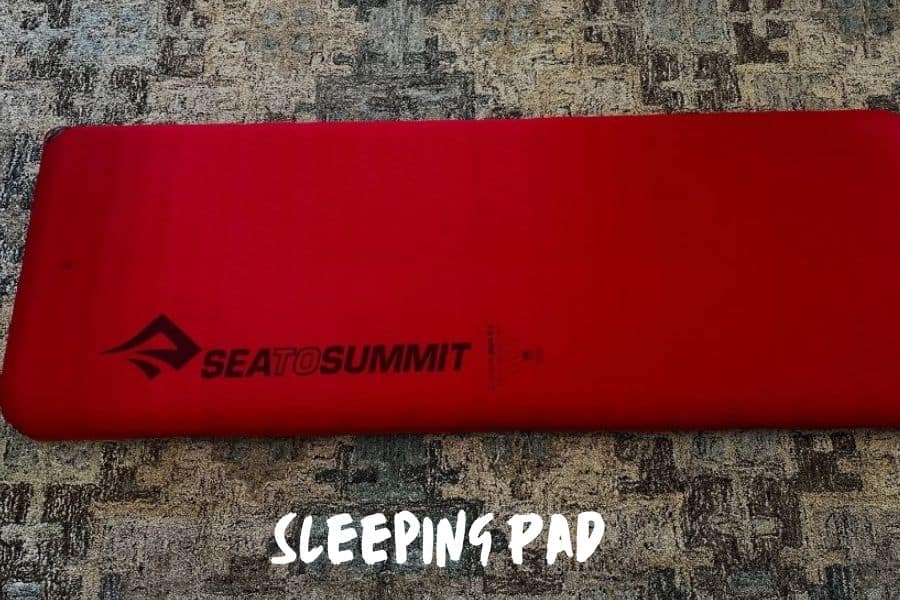
The next thing you’ll need is a good sleeping pad. You might be above the ground, but the cold air flows beneath you, so you need proper bottom insulation.
There are pads specifically designed for hammocks, but you can always use a regular pad for a tent.
Air pads are comfortable and provide great insulation, but are bulky when packed.
Plus, there’s always a risk of puncturing. There’s nothing pleasant about being awoken at night by the sound of a blown out pad. I say that from experience.
But, if you’re using a closed cell foam sleeping pad (CCF), you don’t have to worry about that.
CCF pads are made of dense foam, and are quite lightweight and affordable. Unlike air pads, they can’t be punctured and rendered useless. But they’re not shaped to fit a hammock ideally, and they can move around quite a bit while you sleep.
Finally, we have self-inflating pads, which are the middle ground. They’re basically a very compressed foam that inflates when unpacked. The only downside is they’re not as compact when packed as the other two are.
Underquilt
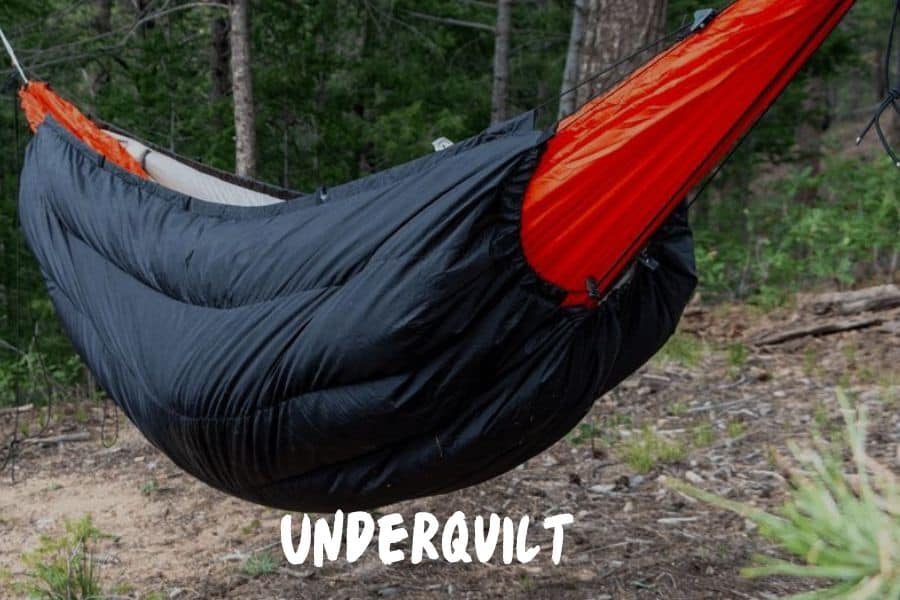
Don’t think that a sleeping pad will be enough. You can never be too safe when it comes to sleeping outside in the midst of winter. Nor too warm.
You’ll need a hammock underquilt, too.
Unlike pads that are placed inside a hammock, underquilts go beneath it.
Together with a pad, they make a nice sandwich out of your hammock, by keeping air trapped in between. And as we all know, air is a great insulator.
Quilt Or Sleeping Bag… Maybe A Pod?
We’ve covered the things that go under your behind, but what’s going to keep you warm from above?
You have three options – a sleeping bag, a sleeping pod and a top quilt.
Generally, you could use a sleeping bag inside a hammock. Mummy-shaped bags are better in this case than ordinary ones, as they protect your head, too.
But the main issue with sleeping bags is that they get compressed inside a hammock, which reduces their insulating ability. Plus, getting in and out of them can be a bit tricky.
A sleeping bag pod is basically a sleeping bag that goes around the hammock, instead of inside. That way, it doesn’t get compressed like a regular sleeping bag does.
My main issue with them is that getting in and out of them is pretty difficult, unless you have someone to lend you a hand.
Finally, we have top quilts, which are specifically designed for hammocks. The bottom is sewn together to keep your feet warm, but the top is open, allowing you more movement. If you already have an underquilt and a pad, your behind is warm enough.
The main issue with top quilts is that they’re usually more expensive than the other two options. But, if you end up loving hammock camping in the winter, this is definitely something to put on your Christmas list.
Rainfly Or Tarp
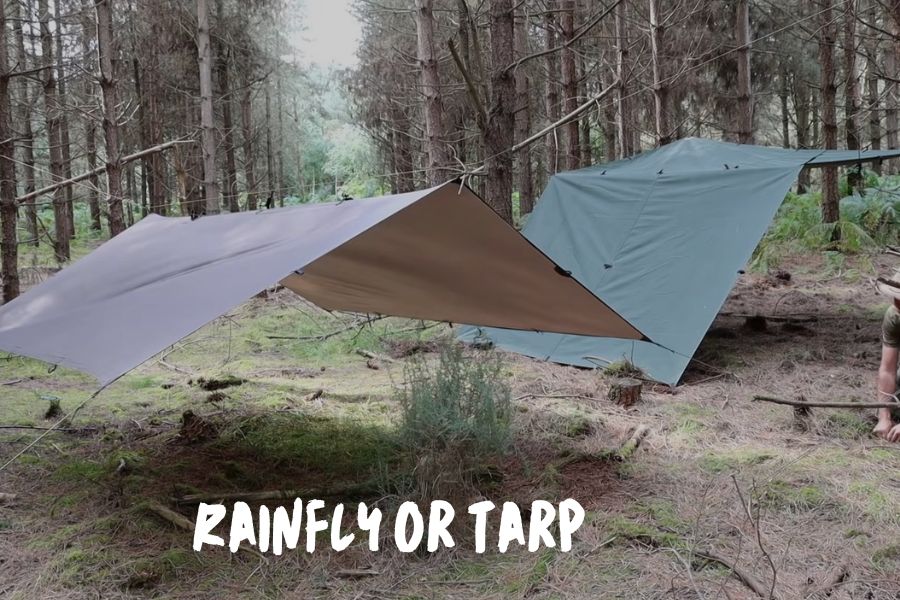
Unless you want to wake up covered in snow, you need some kind of protection above your head.
You can get a hammock tarp designed specifically for hammocks, but if you can’t get one, a regular camping tarp will also do. As long as it keeps your head dry.
Clothing
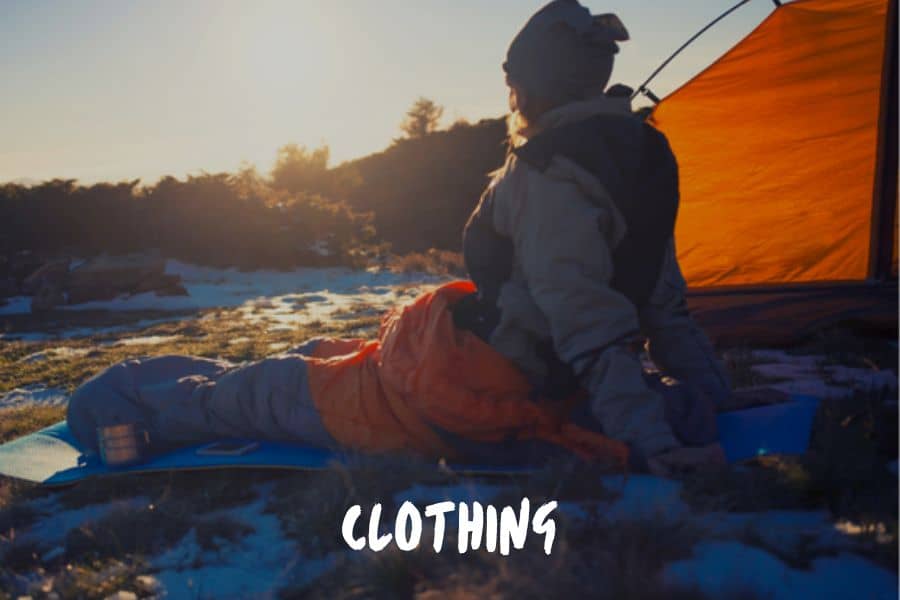
Like I said earlier, when it comes to clothing, you want to dress in layers.
Ideally, you should wear three layers of clothing:
- Base layer – This should regulate your body temperature by wicking sweat away from your body. Go for soft, natural fibers, like merino wool, or if you prefer synthetics, choose something like polyester or nylon.
- Middle layer – This layer works as insulation. Once again, you can choose between natural and synthetic fibers. Polar fleece is an example of a good mid layer.
- Top layer – The final layer is your weather protection. It has to keep you safe from both wind and water. Think of parkas and snow pants, as they’re both designed for such conditions.
Cotton, usually a fabric of choice for most of us, is not something you should pick as your base layer. You don’t need, nay, want that much breathability during winter. The idea behind this layer is to keep all your body heat to yourself.
It goes without saying, but make sure your clothes are completely dry before sleeping in a hammock. Otherwise, the moisture will become ice during the night.
Personally, I like putting whatever I plan on weaning tomorrow inside the hammock. That way, the clothes will keep me heated during the night. What’s more, they’ll be warm when I wake up the next day.
Let’s talk about accessories.
A hat is a must. Unlike the rest of your body, your head is pretty much exposed to the weather elements. If you own a balaclava, even better!
When it comes to feet, I wouldn’t trade my thick woolen socks for anything. And this comes from a person who’d rather die than sleep with her socks on at home.
What Now?
I believe that you’re now ready to go winter hammock camping.
It’s an amazing adventure every camper should experience at least once in their lifetime.
Then, you can choose for yourself whether you like it or not.
But, if I enjoyed it that much, and I’m extremely sensitive to the cold, I’m pretty sure you will, too. As long as you have the proper equipment, you’ll stay safe and warm during the night.
For more tips on staying warm in cold weather, check out this article on winter camping.


